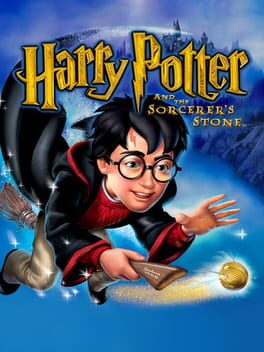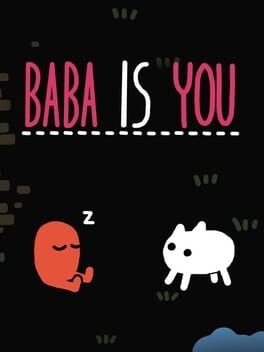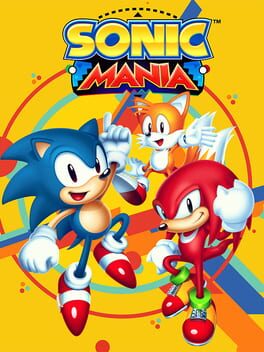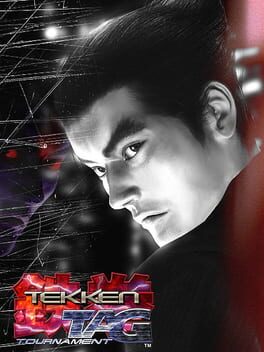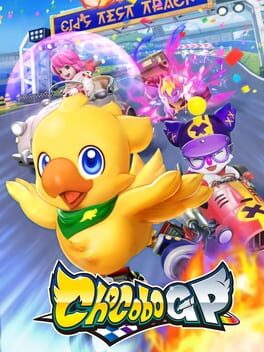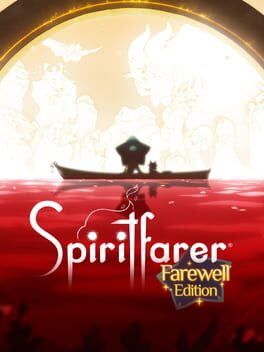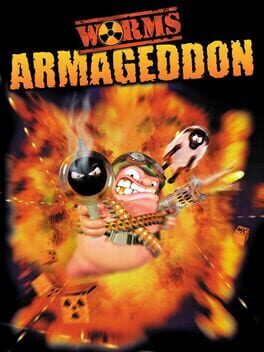unaderon
1998
This review contains spoilers
Another dream game, this one leaning more in the direction of Kingdom Hearts for me with the main character design and a vague sense of angst. The main point of inspiration is clearly Sailor Moon though, right down to the cheerful opening leading to horrible trauma at the end.
The game didn't really click for me until that ending, appropriate given that's the thing it's mostly known for. I can see how the opening levels can carry nostalgic emotions for those who've played it when they were kids, but they did nothing for me. The final couple of levels and bosses was where the vibes were the juiciest and the challenge ramps up just right, had me sweating.
I still think the gameplay potential of a 2D character interacting with a 3D environment is not fully explored here. The game strives hard to make every level streamlined, even where exploration is concerned. Maybe some water temple-esque challenges of interacting with mechanisms to achieve different results wouldn't have gone amiss. Balue's Tower wasn't it, I don't think Klonoa's controls are precise enough to warrant this kind of kaizo gameplay.
Prior to playing the game I thought I'd understand Klonoa's tragedy at the end. As a child I had to move with my parents a lot, changing neighborhoods, schools and, ultimately, friendships frequently. That experience, however, was never traumatic for me. Could that just be repressed? Could it be that I never had false expectations that I'd stay anywhere? I think the worst part was that Huepow lied, the little shit.
Hang in there Klonoa, you drifting soulmate you, that's just how it be sometimes.
The game didn't really click for me until that ending, appropriate given that's the thing it's mostly known for. I can see how the opening levels can carry nostalgic emotions for those who've played it when they were kids, but they did nothing for me. The final couple of levels and bosses was where the vibes were the juiciest and the challenge ramps up just right, had me sweating.
I still think the gameplay potential of a 2D character interacting with a 3D environment is not fully explored here. The game strives hard to make every level streamlined, even where exploration is concerned. Maybe some water temple-esque challenges of interacting with mechanisms to achieve different results wouldn't have gone amiss. Balue's Tower wasn't it, I don't think Klonoa's controls are precise enough to warrant this kind of kaizo gameplay.
Prior to playing the game I thought I'd understand Klonoa's tragedy at the end. As a child I had to move with my parents a lot, changing neighborhoods, schools and, ultimately, friendships frequently. That experience, however, was never traumatic for me. Could that just be repressed? Could it be that I never had false expectations that I'd stay anywhere? I think the worst part was that Huepow lied, the little shit.
Hang in there Klonoa, you drifting soulmate you, that's just how it be sometimes.
This review contains spoilers
In 2019, back in those dreadful days when it was normal and expected of one to have a daily commute, I was playing Link's Awakening on my way home. Tired after a long day's work, I wasn't keen on making any significant progress, just wanted to look around. In the game's main hub town I've found Marin, who began to sing Ballad of the Windfish, a song I've heard a long-long time ago. I sat there, transfixed. I was in there, immersed if you will, a sensation the PS4 that waited for me at home sadly couldn't replicate with all of its hyper realistic graphics.
That's a cliche, I know, but I can't help being sentimental. I watched the little doggie hop about, the butterflies float about, the classic flowers bounce up and down, enjoyed my ability to move about without stopping the song, and goddamn. How did these wizards manage to squeeze this much life into a gameboy game?
After a bit, the magic was gone, I was staring at pixels and the sharp 8-bit sounds made my ears bleed, so I put the game away. But I was not the same after that. It was as if an alternate timeline, when I had Nintendos instead of (or alongside) Playstations as a child, converged with this one. I was, as Scallops Hotel once put it, nostalgic for something I never had.
Usually when someone, as kids today say, gasses a game from their childhood up, it's hard for others to get in on it, as those games tend to be enhanced by the vividness of a child's perception and imagination. I've been burned by Zeldas many times before on that front. Yet this game did it for me, first on an emotional level, and then on an intellectual one as well. It expresses childhood itself in a way only a videogame could.
At the end, after the player wakes the Windfish up, the entire game's world vanishes, being only said fish's (mammal's) dream. The bittersweet feeling one gets from it is analogous with that from growing up. Both things are something one has to willingly do, put effort towards. You don't wanna do it too fast, you want to cherish what you have and be in the moment, but you can't linger for too long. In a videogame, not making progress eventually makes the artifice obvious, breaks the magic of its presentation. In real life, staying an overdue kid is just not pretty. Look at Seth Rogen.
Even if it's gone, even if you can't go to places where you grew up or see people you remember, even if doing things that used to make you happy don't anymore, the initial experience of it all can still be found, deep within the folds of your soul. Summon it up every now and then, like a fleeting dream, to keep your feelings alive. After all, we live inside a dream.
That's a cliche, I know, but I can't help being sentimental. I watched the little doggie hop about, the butterflies float about, the classic flowers bounce up and down, enjoyed my ability to move about without stopping the song, and goddamn. How did these wizards manage to squeeze this much life into a gameboy game?
After a bit, the magic was gone, I was staring at pixels and the sharp 8-bit sounds made my ears bleed, so I put the game away. But I was not the same after that. It was as if an alternate timeline, when I had Nintendos instead of (or alongside) Playstations as a child, converged with this one. I was, as Scallops Hotel once put it, nostalgic for something I never had.
Usually when someone, as kids today say, gasses a game from their childhood up, it's hard for others to get in on it, as those games tend to be enhanced by the vividness of a child's perception and imagination. I've been burned by Zeldas many times before on that front. Yet this game did it for me, first on an emotional level, and then on an intellectual one as well. It expresses childhood itself in a way only a videogame could.
At the end, after the player wakes the Windfish up, the entire game's world vanishes, being only said fish's (mammal's) dream. The bittersweet feeling one gets from it is analogous with that from growing up. Both things are something one has to willingly do, put effort towards. You don't wanna do it too fast, you want to cherish what you have and be in the moment, but you can't linger for too long. In a videogame, not making progress eventually makes the artifice obvious, breaks the magic of its presentation. In real life, staying an overdue kid is just not pretty. Look at Seth Rogen.
Even if it's gone, even if you can't go to places where you grew up or see people you remember, even if doing things that used to make you happy don't anymore, the initial experience of it all can still be found, deep within the folds of your soul. Summon it up every now and then, like a fleeting dream, to keep your feelings alive. After all, we live inside a dream.
2019
Baba Is A truly scandinavian experience. A cozy game on the surface, with soft visuals and rubbery sound reminiscent of the Mumins. The abstract level scenarios hint at the simple, natural pleasures in life - rivers and sea, windswept valleys and forests full of flowers, quiet playtime with friends. Sometimes they branch out into edgier territory, but remain innocent by coming across as Super Mario references - volcanoes, outer space or mountaneering.
But that surface is skin deep. It doesn't take long for one's interactions with the game to bring about senses of identity disorder and nihilism. From the low hum one hears when nothing on a level IS YOU, to how almost no object has inherent properties. The cold and unflinching λόγος of this world, only a fraction of which the player has control over, the way the game begins and ends... If Sören Kierkegaard saw this shit, he'd probably ask to tone it down a peg.
I love this game. It captured my heart instantly and proceeded to melt my mind during those lonely quarantine nights. I don't want to describe any of its mechanics, because discovering and understanding them is a part of gameplay. But the rabbithole to descend into here is very well lubed. Each verb gets a bunch of levels dedicated to it, slowly ratcheting up the complexity of required solutions. It all culminates in the endgame, which provides one of the best hidden and most satisfying secrets you can find in games.
At time of writing I have completed every level in the base game, but since then Hempuli the Legend has provided a whole new level pack called New Adventures, which I've only nibbled at a little. I don't like all of it, 3D gimmick didn't do it for me, neither did the arcade recreations, but they're free and in the spirit of this game's gonzo creativity. There's also a level editor which I really want to dig into and test out my ideas, so I'm never going to be done with this game.
The success on display here is simply inspirational. The idea that this can be what you do to provide for yourself makes my jaded tear ducts unclog. Maybe one day I can make it too.
But that surface is skin deep. It doesn't take long for one's interactions with the game to bring about senses of identity disorder and nihilism. From the low hum one hears when nothing on a level IS YOU, to how almost no object has inherent properties. The cold and unflinching λόγος of this world, only a fraction of which the player has control over, the way the game begins and ends... If Sören Kierkegaard saw this shit, he'd probably ask to tone it down a peg.
I love this game. It captured my heart instantly and proceeded to melt my mind during those lonely quarantine nights. I don't want to describe any of its mechanics, because discovering and understanding them is a part of gameplay. But the rabbithole to descend into here is very well lubed. Each verb gets a bunch of levels dedicated to it, slowly ratcheting up the complexity of required solutions. It all culminates in the endgame, which provides one of the best hidden and most satisfying secrets you can find in games.
At time of writing I have completed every level in the base game, but since then Hempuli the Legend has provided a whole new level pack called New Adventures, which I've only nibbled at a little. I don't like all of it, 3D gimmick didn't do it for me, neither did the arcade recreations, but they're free and in the spirit of this game's gonzo creativity. There's also a level editor which I really want to dig into and test out my ideas, so I'm never going to be done with this game.
The success on display here is simply inspirational. The idea that this can be what you do to provide for yourself makes my jaded tear ducts unclog. Maybe one day I can make it too.
2021
2017
I've been mentally stuck in 2017 all these years. It was a gaming renaissance with both Japanese developers coming back in style and western ones keeping up as well. For me, the most emblematic game of that year is Sonic Mania.
Which is odd, because I'm not a Sonic guy. Never had a Sega console in my life, and whenever I tried getting into the series I always bounced off hard. I have a lot of respect for the series, firstly for putting on a great show, especially on Genesis/Mega Drive, the Lords of the Twang. The sights and sounds, the mechanics, they dazzle now but must've been mindblowing back in the 90's. And the dedication of the fans to study it all so closely and expand and recreate so thoroughly demands a round of applause.
Secondly, it has got really strong gameplay fundamentals. The key question with any platformer for me is this - what's the unifying aspect for a level? Why is a stage composed the way it is? For Sonic (and Mario) the answer is sewn into the character, the momentum. More specifically, the extent to which the player is granted control over it. This means that every element within a level can be encountered at any level of speed and affect the momentum differently. As a result, a level can potentially be played through in a myriad of ways, gameplay has an economy of space and speed management, there's a constant level of engagement. Great stuff!
So I respect Sonic, but it's not for me, the reason being level design. To be blunt, the games love to dick the player about. There's changing movement direction rapidly with a bouncepad, which means braking if one has my glacial reaction time and keeps holding the same dpad button regardless. There are invisible bouncepads sending Sonic flying into a route with no return or an obstacle. There are blink-and-you-miss-it moments where the game lulls the player into a trance with a speedy section only to suddenly yell "Think fast!" and demand a do-or-die decision. I'm a slow bastard, I turn off the time limit to keep that monkey off my back, but even so I just cannot keep up. I've had multiple playthroughs in all these years and can't for the life of me memorize anything cause it's all the same tilesets, the same assets that compose these sprawling, labyrinthian places, and while I see the potential for amazing gameplay, my mind is overly boggled to be engaged. The orientation is just too much to be sexual.
Every time I play I also have a hard time pushing through to the end. The game is frontloaded with amazing stuff, Studiopolis Zone being especially terrific, but at Lava Reef and Oil Ocean it becomes a snoozefest. The dicking about stays a constant, while visuals and music become stale at the tail end of the experience.
Back in 2017 Sonic Mania represented an optimistic sense for a future where everybody, from big money to indies to fans can all have a slice of the big pie. Now it just leaves me feeling empty and sad. Six years on, Sega has dicked the devs over Mania residuals, cocked up Origins and thrust the new Superstars onto Arzest, the developers behind B(a)land Fucking Blunderbuss. Fantastic.
Looks piracy is back on the menu boys.
Which is odd, because I'm not a Sonic guy. Never had a Sega console in my life, and whenever I tried getting into the series I always bounced off hard. I have a lot of respect for the series, firstly for putting on a great show, especially on Genesis/Mega Drive, the Lords of the Twang. The sights and sounds, the mechanics, they dazzle now but must've been mindblowing back in the 90's. And the dedication of the fans to study it all so closely and expand and recreate so thoroughly demands a round of applause.
Secondly, it has got really strong gameplay fundamentals. The key question with any platformer for me is this - what's the unifying aspect for a level? Why is a stage composed the way it is? For Sonic (and Mario) the answer is sewn into the character, the momentum. More specifically, the extent to which the player is granted control over it. This means that every element within a level can be encountered at any level of speed and affect the momentum differently. As a result, a level can potentially be played through in a myriad of ways, gameplay has an economy of space and speed management, there's a constant level of engagement. Great stuff!
So I respect Sonic, but it's not for me, the reason being level design. To be blunt, the games love to dick the player about. There's changing movement direction rapidly with a bouncepad, which means braking if one has my glacial reaction time and keeps holding the same dpad button regardless. There are invisible bouncepads sending Sonic flying into a route with no return or an obstacle. There are blink-and-you-miss-it moments where the game lulls the player into a trance with a speedy section only to suddenly yell "Think fast!" and demand a do-or-die decision. I'm a slow bastard, I turn off the time limit to keep that monkey off my back, but even so I just cannot keep up. I've had multiple playthroughs in all these years and can't for the life of me memorize anything cause it's all the same tilesets, the same assets that compose these sprawling, labyrinthian places, and while I see the potential for amazing gameplay, my mind is overly boggled to be engaged. The orientation is just too much to be sexual.
Every time I play I also have a hard time pushing through to the end. The game is frontloaded with amazing stuff, Studiopolis Zone being especially terrific, but at Lava Reef and Oil Ocean it becomes a snoozefest. The dicking about stays a constant, while visuals and music become stale at the tail end of the experience.
Back in 2017 Sonic Mania represented an optimistic sense for a future where everybody, from big money to indies to fans can all have a slice of the big pie. Now it just leaves me feeling empty and sad. Six years on, Sega has dicked the devs over Mania residuals, cocked up Origins and thrust the new Superstars onto Arzest, the developers behind B(a)land Fucking Blunderbuss. Fantastic.
Looks piracy is back on the menu boys.
2023
Bowl mode was clearly thrown together in 5 minutes as a stocking filler for the console version, but it managed to make me laugh very hard when I accidentally hit overdrive and Yoshimitsu threw himself onto the lane, which the game replayed about 6 times before declaring it a fowl.
I knew this was a thing, I just never realized it was this hard to do. The speed of these meters is unhinged, making every throw an excercise similar to going to the bathroom after an evening on Jägermeister.
I knew this was a thing, I just never realized it was this hard to do. The speed of these meters is unhinged, making every throw an excercise similar to going to the bathroom after an evening on Jägermeister.
2022
2019
Lo-fi has become a movement, a style of its own in the last decade or so. Inspired by the great late Nujabes and his peers, it's a space on Soundcloud, YouTube etc that's about chill vibes, relaxation. Initially a musical subgenre, it grew and spread beyond the boundaries of that categorization. It's not enough to post a mixtape of chill beats, they have to come with a general mood, a theme conveyed through some artwork. If you scroll down to the comments of a lo-fi hip-hop video on YT, you may be surprised to find not cringe humor or holocaust denial, but a community of people sharing their life stories and emotions with otherwise complete strangers.
I first started noticing the style make its way into videogames when Celeste included a remix by In Love With a Ghost in its soundtrack. Games were clearly a part of the lo-fi world before, what with all the vg music remixes in the genre, but this was a full-on feature. With Desert Child first and now A Short Hike, I see Lo-fi Games as a thing now.
Low fidelity implies amateurism, a slapdash approach and outdated technologies. Short Hike has graphics worthy of a Nintendo DS and a vibe worthy of the Gamecube. The gameplay is equally relaxed, just explore, jump, chat up with the locals. What can be classified as a challenge is very soft - on many occasions I've found myself cheesing through level geometry, as the game can be very easygoing about its slopes and edges.
I personally believe this to be an artistic choice. What usually gets overlooked about the lo-fi aesthetic (which is why it can be an object of mockery at times) is that under the careless surface lies attention to detail. The subtle use of effects, the microsounds or the background hums are key ingredients to making a vibe, the main object of interest for the genre. Same with Bird Game - even when it gives the player explicit challenges such as races, the conditions for beating them are vague. BeachStickBall, a tennis-volleyball hybrid, allows the serve to be counted as a point, while also letting the ball touch the ground once before stopping the count. Boat challenge adds extra seconds for bumping rocks, but considers those penalties when reviewing the result. Every character side story manages to include the message to not be too hard on yourself. You're doing great. You're going to get even better. Just keep going.
The game has the best structure a modern game can have in my humble. Obviously inspired by Breath of the Wild, it sets up a final goal that's known from the get-go and erects a soft barrier in front of it - collect some feathers to climb better. How does one collect feathers? Why, just go and play the game.
We here in the westriarchy have a bad case of school brain, a condition when we tend to value extrinsic rewards over the intrinsic ones, even when the former are actually meaningless. How many people complain about Mario 64 booting them out of the level when they collect a star? I've seen youtube thought leaders peddle it, even though the benefit of such a design decision is obvious - the player gets to play more. Every re-entry into a level means an opportunity to experiment, to play around, to find new ways of getting to a goal. But we don't play to play, we play to win, to see that number go up, to beat the game and put it on our Backloggd profile. Playing, learning and adapting can be hard, dopamine from seeing credits roll is much easier.
And yes I said we, I am that guy too. I'm incredibly grateful to games such as A Short Hike for providing practical exercises for deconstructing these habits. Go check out what's around, it says. Play, engage. When you feel like you've had enough, go up the mountain for a final treat. You'll be more than ready.
Thanks, it was lovely.
I first started noticing the style make its way into videogames when Celeste included a remix by In Love With a Ghost in its soundtrack. Games were clearly a part of the lo-fi world before, what with all the vg music remixes in the genre, but this was a full-on feature. With Desert Child first and now A Short Hike, I see Lo-fi Games as a thing now.
Low fidelity implies amateurism, a slapdash approach and outdated technologies. Short Hike has graphics worthy of a Nintendo DS and a vibe worthy of the Gamecube. The gameplay is equally relaxed, just explore, jump, chat up with the locals. What can be classified as a challenge is very soft - on many occasions I've found myself cheesing through level geometry, as the game can be very easygoing about its slopes and edges.
I personally believe this to be an artistic choice. What usually gets overlooked about the lo-fi aesthetic (which is why it can be an object of mockery at times) is that under the careless surface lies attention to detail. The subtle use of effects, the microsounds or the background hums are key ingredients to making a vibe, the main object of interest for the genre. Same with Bird Game - even when it gives the player explicit challenges such as races, the conditions for beating them are vague. BeachStickBall, a tennis-volleyball hybrid, allows the serve to be counted as a point, while also letting the ball touch the ground once before stopping the count. Boat challenge adds extra seconds for bumping rocks, but considers those penalties when reviewing the result. Every character side story manages to include the message to not be too hard on yourself. You're doing great. You're going to get even better. Just keep going.
The game has the best structure a modern game can have in my humble. Obviously inspired by Breath of the Wild, it sets up a final goal that's known from the get-go and erects a soft barrier in front of it - collect some feathers to climb better. How does one collect feathers? Why, just go and play the game.
We here in the westriarchy have a bad case of school brain, a condition when we tend to value extrinsic rewards over the intrinsic ones, even when the former are actually meaningless. How many people complain about Mario 64 booting them out of the level when they collect a star? I've seen youtube thought leaders peddle it, even though the benefit of such a design decision is obvious - the player gets to play more. Every re-entry into a level means an opportunity to experiment, to play around, to find new ways of getting to a goal. But we don't play to play, we play to win, to see that number go up, to beat the game and put it on our Backloggd profile. Playing, learning and adapting can be hard, dopamine from seeing credits roll is much easier.
And yes I said we, I am that guy too. I'm incredibly grateful to games such as A Short Hike for providing practical exercises for deconstructing these habits. Go check out what's around, it says. Play, engage. When you feel like you've had enough, go up the mountain for a final treat. You'll be more than ready.
Thanks, it was lovely.
2022
Didn't beat it, this is more of a first impressions than a review.
The game is very solid aesthetically, but the punitive system goes against that. Unless you grasp some fundamentals, you're going to be replaying the same levels over and over again. All the stings, dings and tiny interactions get lost in the rush of go-go-go. You've seen it several times already, and even the most beautiful of things lose their luster when experienced more than necessary.
Swaying is the baseline element of the battle system, around which all else is built. It restores your Sekiro-esque balance gauge, gives you a score multiplier and is the most reliable way of staying safe, as the i-frames are rather generous. Its economy is built around having to do mostly the same kind of sway while throwing in an occasional unusual one to keep you on your toes, though none of this is very well tutorialized. Once you grasp this, you can start playing with the more general mechanics like using terrain to your advantage, armored moves, crowd control etc. You can't stay too comfortable though, as crowds can make short work of you - they don't have the courtesy of coming at you one at a time, so you will have to think about positioning or throwing out something expendable, like the concentration super-moves.
Having gotten better at the game and clearing several levels in a session one after another when they used to give me so much shit is a sensation I can genuinely thank the game for, but whether I will love it again whenever I come back to it, or if it crumbles at my feet to grind and bullshit is a question for the future.
The game is very solid aesthetically, but the punitive system goes against that. Unless you grasp some fundamentals, you're going to be replaying the same levels over and over again. All the stings, dings and tiny interactions get lost in the rush of go-go-go. You've seen it several times already, and even the most beautiful of things lose their luster when experienced more than necessary.
Swaying is the baseline element of the battle system, around which all else is built. It restores your Sekiro-esque balance gauge, gives you a score multiplier and is the most reliable way of staying safe, as the i-frames are rather generous. Its economy is built around having to do mostly the same kind of sway while throwing in an occasional unusual one to keep you on your toes, though none of this is very well tutorialized. Once you grasp this, you can start playing with the more general mechanics like using terrain to your advantage, armored moves, crowd control etc. You can't stay too comfortable though, as crowds can make short work of you - they don't have the courtesy of coming at you one at a time, so you will have to think about positioning or throwing out something expendable, like the concentration super-moves.
Having gotten better at the game and clearing several levels in a session one after another when they used to give me so much shit is a sensation I can genuinely thank the game for, but whether I will love it again whenever I come back to it, or if it crumbles at my feet to grind and bullshit is a question for the future.
It's really hard to gauge how much quality has to do with recognition.
Jotun, Thunder Lotus' first release, was, in my humble, a disaster. Back when I played it I tried to make every gaming purchase, even a risky one, count, extracting as much enjoyment from them as possible. But Jotun showed me such horrible design decisions every step of the way that several levels in I dropped it without regret. Sundered, their next game, got mixed reception upon release, so I ignored it.
Now here's Spiritfarer, getting nominated for stuff and praised by reviewers I like. It's also comfort food tailor made for me specifically: hand-drawn graphics, what attracted me to this team in the first place, platforming, Persona-esque daily grind with character study to boot and that sweet theme of death I fell in love with since Valkyrie Profile. Maritime setting! Metroidvania elements! Co-op! Let's go already!
The lackluster action of the studio's previous titles gets rolled back here in favor of a chill, beginner friendly experience without hard and explicit fail states. As the player tends to spirits they fare into afterlife, they go back and forth between simple minigames on their ship and exploration of islands. The results of both are parts of a feedback loop: gathering stuff, some of it in service of the spirits' earthly and questly needs, some to build structures to gather even more stuff with. This process is marred by a sense of severe linearity, as by the first 5th of the game all the available types of resources have revealed themselves to the player and since then progress only in value, without variation in source or usage. Each tier of value becomes available more or less precisely as the next section of the world map opens up.
Only the spirits are a saving grace, they earn this game all of its stars. They often shake the player out of repetition by where they come from or what they require, which puts emphasis on the aspects of gameplay one may take for granted. Alice the Hedgehog for example may ask for a relocation of her house, which in this game means rearranging the whole ship since every building is shaped like a crude tetromino. Beverly the Smolbird is small, often lost in the visual detail and thus may end up left to starve unattended.
Out of all the cute and charming characters, the one I ended up having the biggest emotional response to was Jackie, from the Farewell update. I hate him, he's such a piece of garbage that every line out of his mouth made me cuss. And he knows it! And the game knows as well. The game's writing in general left me cold, it has a very 2020 internet quality to it, if that makes any sense. But with that guy it transcended, hit something special, at least for me. This emptiness I haven't felt since teenagerhood, one that comes from the realization that some people are shit and neither you, nor they can really do anything about it.
Unfortunately, all of that beautiful hate and emptiness is built on a very wobbly foundation. The ship that the player travels on is a visual metaphor for the whole game - a lot of structures and systems struggling to
exist on top of the Unity engine instead of naturally extending it. It's true on both technical and gamedesign fronts. In the former case, it means various in-game events contradicting each other: taking
interactability away from important objects, de- and respawning player characters when things get too crazy and sometimes just freezing the characters in place. In terms of gamedesign, there are glaring, basic
mistakes, like character visibility - it's possible to lose one's position on the screen, easy to get obscured by some foreground elements. And with how lightweight the characters are, one is likely to then misposition
themselves, making the game's rudimentary platforming more cumbersome than cathartic. All of this is made twice as bad with co-op, where the camera is incapable of following the players' speeds, often leaving one or
both off screen. With the second player controlling Daffodil the Cat, a character two times shorter than the main girl Stella, they will have the worst time exploring interiors of numerous buildings scattered throughout
the game, as the facades will keep them obscured basically at all times.
I take no joy in this criticism. While I do cherish the heights the new chillout approach let the team reach with this game, those are but a fraction of dozens of hours this game requires to complete. For people like myself, who enjoy the fantasy of being effective and productive every day, the menial labor of this game's grind is fine, it's kind of a part of that fantasy to be honest. But to anybody without these predispositions reaching "the good parts" will most likely not be worth it. One thing I wish Thunder Lotus does with a next project is stick to a simpler, more immediate gameplay concept and polish up some fundamentals.
Here's to a better next one.
Jotun, Thunder Lotus' first release, was, in my humble, a disaster. Back when I played it I tried to make every gaming purchase, even a risky one, count, extracting as much enjoyment from them as possible. But Jotun showed me such horrible design decisions every step of the way that several levels in I dropped it without regret. Sundered, their next game, got mixed reception upon release, so I ignored it.
Now here's Spiritfarer, getting nominated for stuff and praised by reviewers I like. It's also comfort food tailor made for me specifically: hand-drawn graphics, what attracted me to this team in the first place, platforming, Persona-esque daily grind with character study to boot and that sweet theme of death I fell in love with since Valkyrie Profile. Maritime setting! Metroidvania elements! Co-op! Let's go already!
The lackluster action of the studio's previous titles gets rolled back here in favor of a chill, beginner friendly experience without hard and explicit fail states. As the player tends to spirits they fare into afterlife, they go back and forth between simple minigames on their ship and exploration of islands. The results of both are parts of a feedback loop: gathering stuff, some of it in service of the spirits' earthly and questly needs, some to build structures to gather even more stuff with. This process is marred by a sense of severe linearity, as by the first 5th of the game all the available types of resources have revealed themselves to the player and since then progress only in value, without variation in source or usage. Each tier of value becomes available more or less precisely as the next section of the world map opens up.
Only the spirits are a saving grace, they earn this game all of its stars. They often shake the player out of repetition by where they come from or what they require, which puts emphasis on the aspects of gameplay one may take for granted. Alice the Hedgehog for example may ask for a relocation of her house, which in this game means rearranging the whole ship since every building is shaped like a crude tetromino. Beverly the Smolbird is small, often lost in the visual detail and thus may end up left to starve unattended.
Out of all the cute and charming characters, the one I ended up having the biggest emotional response to was Jackie, from the Farewell update. I hate him, he's such a piece of garbage that every line out of his mouth made me cuss. And he knows it! And the game knows as well. The game's writing in general left me cold, it has a very 2020 internet quality to it, if that makes any sense. But with that guy it transcended, hit something special, at least for me. This emptiness I haven't felt since teenagerhood, one that comes from the realization that some people are shit and neither you, nor they can really do anything about it.
Unfortunately, all of that beautiful hate and emptiness is built on a very wobbly foundation. The ship that the player travels on is a visual metaphor for the whole game - a lot of structures and systems struggling to
exist on top of the Unity engine instead of naturally extending it. It's true on both technical and gamedesign fronts. In the former case, it means various in-game events contradicting each other: taking
interactability away from important objects, de- and respawning player characters when things get too crazy and sometimes just freezing the characters in place. In terms of gamedesign, there are glaring, basic
mistakes, like character visibility - it's possible to lose one's position on the screen, easy to get obscured by some foreground elements. And with how lightweight the characters are, one is likely to then misposition
themselves, making the game's rudimentary platforming more cumbersome than cathartic. All of this is made twice as bad with co-op, where the camera is incapable of following the players' speeds, often leaving one or
both off screen. With the second player controlling Daffodil the Cat, a character two times shorter than the main girl Stella, they will have the worst time exploring interiors of numerous buildings scattered throughout
the game, as the facades will keep them obscured basically at all times.
I take no joy in this criticism. While I do cherish the heights the new chillout approach let the team reach with this game, those are but a fraction of dozens of hours this game requires to complete. For people like myself, who enjoy the fantasy of being effective and productive every day, the menial labor of this game's grind is fine, it's kind of a part of that fantasy to be honest. But to anybody without these predispositions reaching "the good parts" will most likely not be worth it. One thing I wish Thunder Lotus does with a next project is stick to a simpler, more immediate gameplay concept and polish up some fundamentals.
Here's to a better next one.
1999
Whenever the sceptic in my brain starts giving Smash Melee purists funny looks I have to slap myself and remember how many hours I've sunk into Worms 2 and Armageddon specifically. There have been many more Worms games since, and yet this is the one for me.
Much like Smash Bros, this series is all about mixing several genres together, which in its case are strategy and shooter, with elements of golfing sprinkled in. In a match each player commands a team of worms, taking turns controlling one individual at a time. Positioning is key here - staying closer to the enemy makes it easier to land precise shots while also making yourself vulnerable, and staying far means dealing with wind, grenade weight and bounce, very precise charge-ups etc. As such, movement is key, learning how to jump can open up more of the map without wasting resources, and doing it properly can shave precious seconds off your turn. And if you are to waste resources you have options, with none being as important as the Rope, mastery over which separates men from boys.
Like the best multiplayer games, Worms walks a fine line between a party game and competitive sport. A rather broad suite of customization options helps determine how precise or how random you want your matches to be. If for some reason what is offered out of the box is not enough, Armageddon is probably the easiest game in the world to mod.
That goes for aesthetics too. In case the game's default Monty Python-esque humor isn't enough for you, turning it into PC gaming's Smash by making your worms say Duke Nukem lines in a high pitch or replacing their sprites with Starcraft's Zerg Ultralisk or whatever is as easy as adding or replacing some files in game's folder.
And that's all fine, but even if you're not interested in all that, Armageddon is still the absolute GOAT. The reason for that is something that cannot be understood through words, it's got to be felt. It's all in the physics. The way an explosion can send a worm flying at supersonic speeds, the way everything bounces off of surfaces. The mad unpredictability of the map destruction that can lead to your grenade flying back in your face because a tiny piece of land was left there and you just couldn't see it. This game is a masterpiece of slapstick comedy that sets ablaze whenever somebody playing it says "Imma try something now", which can end as either a limp whiff, a hilarious, disastrous misfire or a jaw-dropping success, as if the map was a Rube Goldberg Machine and only that player could see it the whole time.
Much like with Melee, concessions have to be made that yes, a huge part of the arsenal is trash and the Rope is over-emphasized. But none of the sequels, which I can't honestly say even fix that problem, made me laugh and fill me with so much joy as consistently as this game does to this day.
Much like Smash Bros, this series is all about mixing several genres together, which in its case are strategy and shooter, with elements of golfing sprinkled in. In a match each player commands a team of worms, taking turns controlling one individual at a time. Positioning is key here - staying closer to the enemy makes it easier to land precise shots while also making yourself vulnerable, and staying far means dealing with wind, grenade weight and bounce, very precise charge-ups etc. As such, movement is key, learning how to jump can open up more of the map without wasting resources, and doing it properly can shave precious seconds off your turn. And if you are to waste resources you have options, with none being as important as the Rope, mastery over which separates men from boys.
Like the best multiplayer games, Worms walks a fine line between a party game and competitive sport. A rather broad suite of customization options helps determine how precise or how random you want your matches to be. If for some reason what is offered out of the box is not enough, Armageddon is probably the easiest game in the world to mod.
That goes for aesthetics too. In case the game's default Monty Python-esque humor isn't enough for you, turning it into PC gaming's Smash by making your worms say Duke Nukem lines in a high pitch or replacing their sprites with Starcraft's Zerg Ultralisk or whatever is as easy as adding or replacing some files in game's folder.
And that's all fine, but even if you're not interested in all that, Armageddon is still the absolute GOAT. The reason for that is something that cannot be understood through words, it's got to be felt. It's all in the physics. The way an explosion can send a worm flying at supersonic speeds, the way everything bounces off of surfaces. The mad unpredictability of the map destruction that can lead to your grenade flying back in your face because a tiny piece of land was left there and you just couldn't see it. This game is a masterpiece of slapstick comedy that sets ablaze whenever somebody playing it says "Imma try something now", which can end as either a limp whiff, a hilarious, disastrous misfire or a jaw-dropping success, as if the map was a Rube Goldberg Machine and only that player could see it the whole time.
Much like with Melee, concessions have to be made that yes, a huge part of the arsenal is trash and the Rope is over-emphasized. But none of the sequels, which I can't honestly say even fix that problem, made me laugh and fill me with so much joy as consistently as this game does to this day.
